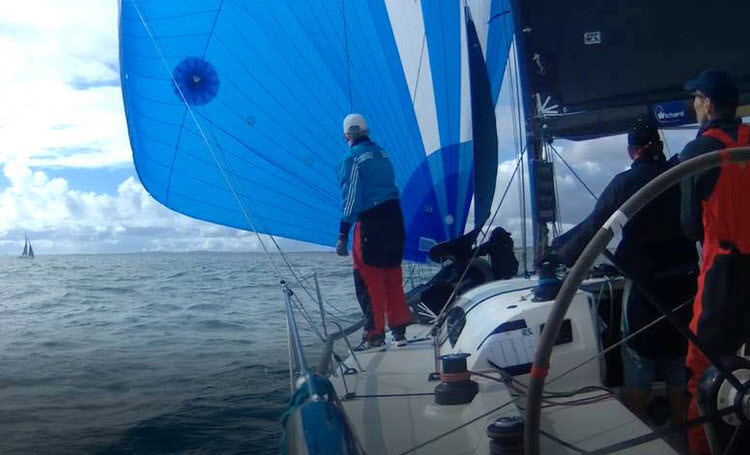How sailing wing-on-wing is a weapon
Published on October 20th, 2019
by Adam Loory, UK Sailmakers
Here’s a simple solution to a complex tactical leeward mark situation. We’ve all been there and done that: approaching a leeward mark but your line is too high to do a desired wide-and-tight rounding. You’d love to do a Mexican (left gate, left turn); but you’re too high and sailing lower with an asym is, in a word, slow! What do you do? You really have only two options.
• Choice one is to throw in a last-minute gybe. That will get you to the mark with proper VMG; but it will move you down the popularity ladder with your crew…not to mention creating huge opportunities for chaos at the rounding.
• Here’s another option: sail wing-on-wing straight downwind towards the mark and be ready for a great left gate rounding.
To shift to wing-on-wing, have someone stand on the leeward rail and hold out the spin sheet while you turn down and someone flops the boom to windward. Downwind you go! Get your jib up and you’re all set for the perfect Mexican port rounding.
(Note to self: In big winds, you’re probably better doing an early drop and jib reaching into the mark for the final few boat lengths as shifting the boom may be problematic if under load.)
By gybing just the main, it allows the boat to sail dead-down-wind. While you will not be sailing at target speed, sailing wing-on-wing for a short distance can be faster than throwing in a gybe or two and getting the crew tied in knots.
Sailing wing-on-wing is also a good tactical move in crowded fleets. You can use this maneuver for a few boat lengths to get away from a wall of bad air from boats behind you.
Like any maneuver, to sail well wing-on-wing with an asymmetrical spinnaker, your crew needs to practice keeping the spinnaker full. Once mastered, you’ll find it a good tool in your tactical toolbox.

UK Sailmakers Fremantle’s Geoff Bishop’s King 40 CHECKMATE sailing wing-on-wing in order to make a leeward mark in a recent race.
Source: UK Sailmakers









 We’ll keep your information safe.
We’ll keep your information safe.